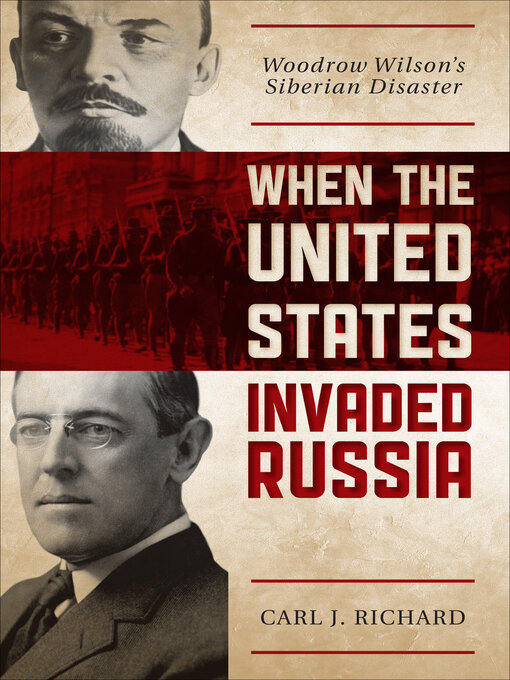In a little-known episode at the height of World War I, President Woodrow Wilson dispatched thousands of American soldiers to Siberia. Carl J. Richard convincingly shows that Wilson’s original intent was to enable Czechs and anti-Bolshevik Russians to rebuild the Eastern Front against the Central Powers. But Wilson continued the intervention for a year and a half after the armistice in order to overthrow the Bolsheviks and to prevent the Japanese from absorbing eastern Siberia. As Wilson and the Allies failed to formulate a successful Russian policy at the Paris Peace Conference, American doughboys suffered great hardships on the bleak plains of Siberia.
Richard argues that Wilson’s Siberian intervention ironically strengthened the Bolshevik regime it was intended to topple. Its tragic legacy can be found in the seeds of World War II—which began with an alliance between Germany and the Soviet Union, the two nations most aggrieved by Allied treatment after World War I—and in the Cold War, a forty-five year period in which the world held its collective breath over the possibility of nuclear annihilation.
One of the earliest U.S. counterinsurgency campaigns outside the Western Hemisphere, the Siberian intervention was a harbinger of policies to come. Richard notes that it teaches invaluable lessons about the extreme difficulties inherent in interventions and about the absolute need to secure widespread support on the ground if such campaigns are to achieve success, knowledge that U.S. policymakers tragically ignored in Vietnam and have later struggled to implement in Iraq and Afghanistan.
-
Creators
-
Publisher
-
Release date
November 29, 2012 -
Formats
-
Kindle Book
-
OverDrive Read
- ISBN: 9781442219908
-
EPUB ebook
- ISBN: 9781442219908
- File size: 7517 KB
-
-
Languages
- English
-
Reviews
-
Publisher's Weekly
November 12, 2012
As a means of understanding 20th-century Soviet-American and modern Russian-American relations, University of Louisiana history professor Richards (Why We’re All Romans) explores the United States’ invasion of Siberia in 1918, an event “as familiar as the story of George Washington and the cherry tree” is to Americans, but which few in the U.S. know anything about. In 1918, after the Bolshevik revolution, President Woodrow Wilson ordered 8,500 “American forces to Siberia to help the Czechs and Russian anti-Bolsheviks overthrow the Soviet Government as the first step in re-creating the Eastern Front against the Central Powers.” During their brief tenure in the harsh Siberian climate, American soldiers mainly guarded railroads and supplies while engaging in occasional skirmishes against government partisans and weathering stormy relations with the more organized and territorially minded Japanese forces. Faced with growing resentment from other Allied powers and the tumultuous Russian political climate, American troops finally withdrew in April 1920, leaving behind lasting resentments that would cast a pall on the Paris Peace Conference in 1919, the cold war, and American interventionism through Vietnam and the wars in Iraq and Afghanistan. For military historians and students of modern American foreign policy, Richard’s specialized study is illuminating. Map, photos.
-
Formats
- Kindle Book
- OverDrive Read
- EPUB ebook
subjects
Languages
- English
Loading
Why is availability limited?
×Availability can change throughout the month based on the library's budget. You can still place a hold on the title, and your hold will be automatically filled as soon as the title is available again.
The Kindle Book format for this title is not supported on:
×Read-along ebook
×The OverDrive Read format of this ebook has professional narration that plays while you read in your browser. Learn more here.

